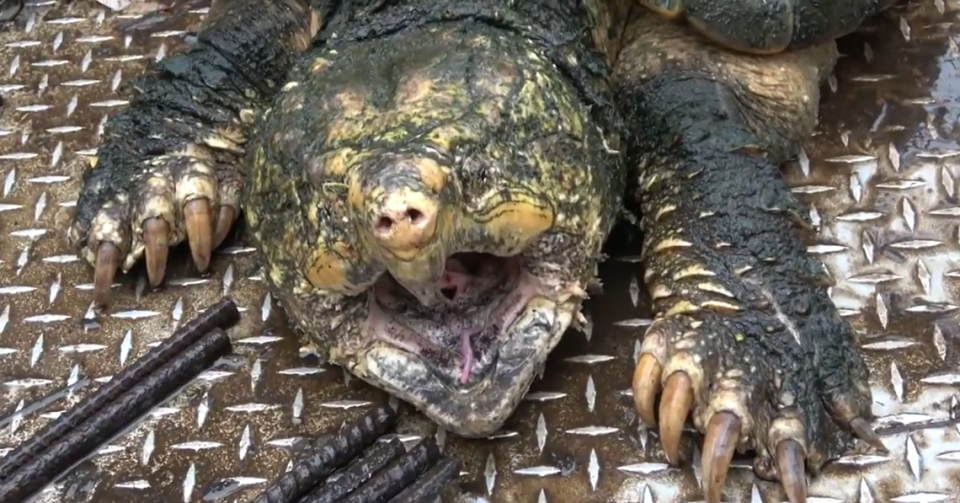Alligator snapping turtles found in an unexpected part of Florida, baffling experts
Alligator snapping turtles can weigh more than 200 pounds, so it’s tough to imagine a new population has just been discovered in Florida’s Homosassa River.
Where they came from and how they went missed are among the many questions state biologists are trying to answer, according to the Florida Fish and Wildlife Research Institute.
One thing they know for sure: This is not a case of a pet being set free. Nine have been trapped, including one that weighed 99 pounds, the institute told McClatchy News.
“The Homosassa River is unusual in that there appears to be a large population of big alligator snapping turtles that must have been there for a significant amount of time without the awareness of scientists,” the institute reports.
“All evidence points to these being the Suwannee alligator snapping turtle species ... which is listed as state threatened and supposedly restricted to the Suwannee (River) drainage. This leads to the question of whether this is a natural population that has gone undetected until now.”
The new population is thriving about 45 miles from where Suwannee alligator snapping turtles are expected in Florida, officials said.
Alligator snapper turtles are “the largest freshwater turtle in North America,” with shells that can exceed 2.5 feet in length, large heads and “a tremendously long tail,” according to the Florida Fish and Wildlife Conservation Commission.
They are not considered a threat to humans, but can inflict damage when harassed. Their beak-like mouth has “a bite force of 1,000 pounds,” making their jaws capable of snapping bones, the National Wildlife Federation reports.
“These highly aquatic turtles are secretive and cryptic, and their presence often goes unnoticed by local residents,” the institute says.

“This may not be the case in the spring-fed Homosassa River, however, because its clear water allows greater visibility than the blackwater or alluvial rivers often frequented by Macrochelys. In addition, the river receives a lot of recreational use besides fishing and boating, because it is a popular area to view overwintering Florida manatees.”
Hearsay has it someone may have placed the turtles in the Homosassa River in the 1990s, state officials said.
A reported turtle sighting near the Ellie Schiller Homosassa Springs Wildlife State Park is what prompted the investigation. The park is about 70 miles north of Tampa, in Citrus County.
The mouths of the Homosassa and Suwannee rivers empty into the Gulf of Mexico.
State researchers have conducted one trapping expedition at the site and two more are planned “to generate a population estimate ... and their possible source of introduction.”
Rare American crocodile caught in Florida drainpipe, police say. It was 9 feet long
Two rare Galapagos tortoises stolen in Florida have been recovered. One died, cops say
Albino rattlesnake that was among largest on record has died at Florida zoo, site says

